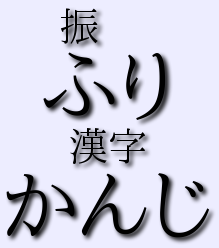
This add-on adds support for furikanji and slightly changes the way kanji and readings are parsed.
This add-on is for use with the desktop client only. Using features of this add-on with mobile clients or AnkiWeb may result in suboptimal layout.
This is an Anki 2.0 plugin. I think i will update it to 2.1, but don’t know when i will get around to it. If you are impatient, you can of course do the update yourself. Please let me know which way you want your version published.
Furikanji
The template furikanji uses a standard reading field to
render kanji above the kana.
To use this, put {{furikanji:Field name}} instead of
{{furigana:Field name}} in the template.
![Text: 起きなよいい加減お with
きなよいいかげん as ruby and 起[お]きなよいい 加減[かげん], with
square brackets.](images/furikanji-web.png)
As the furikanji rendering is done on the fly by the desktop client, it does not work with AnkiWeb, AnkiDroid or AnkiMobile. There the text is rendered as it is seen in the edit screen, with the square brackets.
Furikanji and AnkiDroid

Daring spirits can try to merge my option-furikanji branch into their AnkiDroid source. It contains the equivalent of this code in the FuriganaFilters.java
file and adds furikanji to AnkiDroid.
This may not work with Android versions < 3.0
CSS classes
Text that uses the now four templates furigana, furikanji, kana
and kanji gets appropriate CSS classes. The ruby elements have the
additional classes furigana and furikanji; the kana and kanji
texts get wrapped in spans with classes kana and
kanji.
See the complex classes page for examples on how to use these classes.
Furigana, kanji and reading templates
The {{furigana:Field NN}}, {{kanji:Field NN}} and {{kana:Field
NN}} templates have been modified. The standard templates use ASCII
spaces (
) and >
characters to determine the beginning of the
kanji text. The modified version treats only characters in the word
character class as ruby base.
This means that commas, newlines, CJK spaces &c. can be used as separators between kanji and other, preceding text.
Limitations
- Leading kana are not automatically separated. For example the
reading for
お釣り
must still be written with an ASCII space or other separator between theお
and the釣
:お 釣[つ]り
. - As the other functions, this works only on the desktop client.